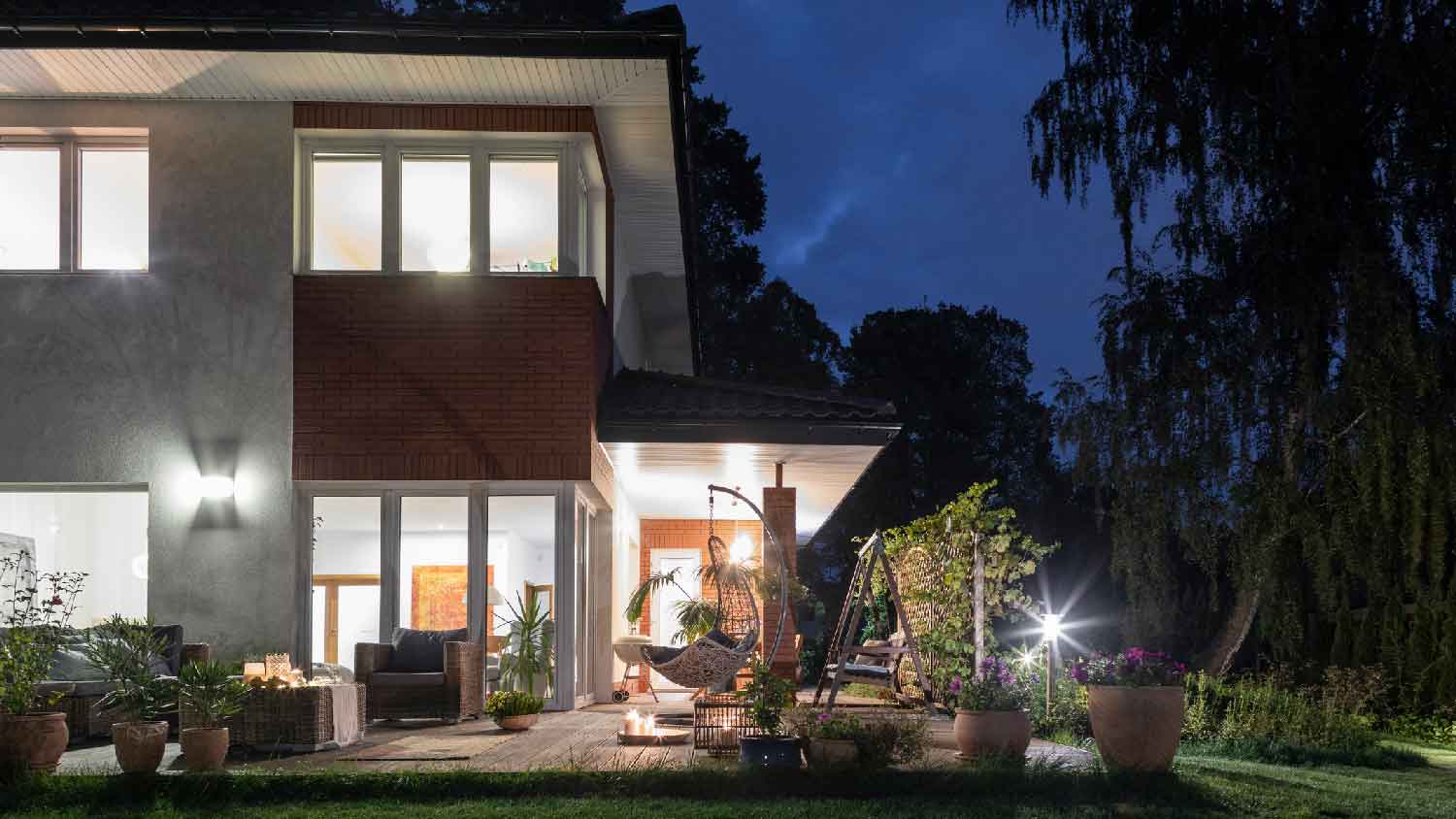
Discover the cost to install landscape lighting. Learn about average prices, key cost factors, and ways to save on your outdoor lighting project.
It’s basically hamburger vs. hotdog style, but for outdoor lights


Flood and spot lights are named for the lighting effect they emit.
Flood lights have large beam angles that result in wide and shallow coverage.
Spotlights have small beam angles that create narrow and sharp light.
If you’re looking to accent your landscaping or boost your home’s security, spotlights and flood lights may end up on your shopping list. These types of outdoor lights carry a few important differences that make them better suited to certain applications. Not sure which light you need or where to put it? Find all the main differences between flood vs. spot lights below for informed outdoor illumination.
Spotlights and flood lights are both often used for outdoor purposes but carry a few key differences. These include lens angles, lighting effects, lumens, fixture appearances, and application.
| Difference | Flood Light | Spotlight |
|---|---|---|
| Lens Angle | 45 – 120 degrees | 25 – 45 degrees |
| Lighting Effect | Wide | Narrow |
| Lumens | 700 – 1,300 | 50 – 300 |
| Appearance | Large | Small |
| Application | Decorative | Utility |
The main distinguishing feature between flood lights and spotlights is the respective lens angle. The lens angle, also called the beam angle, is a metric that refers to how a light spreads from the source fixture. The terms flood light and spotlight essentially describe the way or angle that these fixtures emit light.
Depending on the shape of the lamp and application, flood lights can have lens angles anywhere from 45 to 120 degrees, which creates a wash or “flood” of light. Spotlights don’t exceed 45 degrees, resulting in a narrow beam spread or “spot” of light.

The lens angle and resulting beam spread is the defining difference between flood lights and spotlights, but the resulting lighting effects have a few more important differences.
Flood lights have a wide beam, which achieves a few different things. The beam angle results in a lower light intensity, which creates a lighting effect with high diffusion, non-directional illumination, and softer shadows. The lower light intensity also means that the beam can’t reach as far as a spotlight could when operating with the same wattage.
The small angle of spotlights results in a circular and high-intensity spot. The lighting effect is directional and concentrated to create high-contrast illumination with sharp shadows. Since a spotlight is less diffused across a wider lens when compared to a flood light, its beam can reach further with the same wattage level.
Even with a wider beam angle, flood lights can still reach as far as a spotlight — they just need higher lumens and wattage to do so. Depending on the purpose and placement of the light, the recommended lumens for outdoor flood lights range from 700 to 1,300. Higher lumens translate to higher wattage and therefore higher energy consumption and electricity bills.
Outdoor spotlights, however, typically only need between 50 and 300 lumens. This means that an individual spotlight is more energy efficient than a flood light, but the trade-off is that you’ll likely need more than one spotlight to accomplish similar lighting coverage as a flood light.
| Type of Light (LED) | Lumens | Watts |
|---|---|---|
| Floodlight | 700 – 1,300 | 7 – 18 |
| Spotlight | 50 – 300 | 2 – 6 |
Besides the beam angle, flood lights and spotlights also look different in regard to shape and size. Flood lights are usually rectangular or oval-shaped, and their bulky design is part of what enables a broad angle and illumination. Spotlights have narrow and circular lamps, which permits a small and sleek fixture.
Flood lights are generally reserved for specific applications, which are primarily outdoor. With a wide angle, your local outdoor lighting professional will likely recommend flood lights to best illuminate areas around your home at night, so you can see properly and deter intruders. In many cases, flood lights are motion-activated and turn off after inactivity. The most common places for flood lights include:
Driveways
Sheds
Above or beside garages
Along paths
Near entrances
Workshops
Since spotlights have narrow beams, they can be used for a variety of indoor and outdoor applications. They’re most often used for outdoor accents and landscape lighting, like highlighting gardens, statues, and fountains. You can also use spotlights indoors to illuminate halls or small workspaces.
From average costs to expert advice, get all the answers you need to get your job done.

Discover the cost to install landscape lighting. Learn about average prices, key cost factors, and ways to save on your outdoor lighting project.

How do you choose between the many types of outdoor lighting when planning for your space? Learn about each kind in this quick outdoor light guide.

If there's one thing your outdoor parties and barbecues need, it's a bit of light. These outdoor lighting questions will help you light up the night.

Get transparent landscape lighting repair cost info. Learn what impacts price, compare repair vs. replacement, and find ways to save on your project.